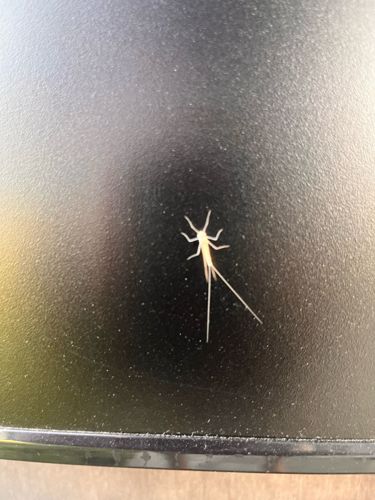Mayfly (Adult)
Scientific Name: Varies depending on species within Ephemeroptera
Order & Family: Order Ephemeroptera (Mayflies), various families within this order.
Size: Adult mayflies can range in body length from 2 mm to 30 mm, with their long tails (cerci) adding significant length, sometimes up to twice their body length.

Natural Habitat
Mayflies are aquatic insects. Their nymph stage lives in freshwater environments such as streams, rivers, lakes, and ponds. Adult mayflies are typically found near these water sources.
Diet & Feeding
As nymphs, mayflies are primarily herbivores, grazing on algae and detritus (decaying organic matter) in the water. Adult mayflies do not have functional mouthparts and do not feed.
Behavior Patterns
Mayflies spend most of their lives as aquatic nymphs, which can take several months to several years to develop. Once they emerge as adults, they have a very short lifespan, often lasting only a few hours to a few days. They do not feed as adults; their sole purpose is reproduction. They are typically found near water sources and are strong indicators of good water quality.
Risks & Benefits
Mayflies are generally harmless to humans. They do not bite or sting and are not known to transmit diseases. As a benefit, mayfly nymphs are an essential part of aquatic food webs, serving as a food source for fish and other aquatic animals. They are also considered excellent bioindicators of water quality; their presence often signifies a healthy aquatic ecosystem with good oxygen levels.
Identified on: 8/9/2025